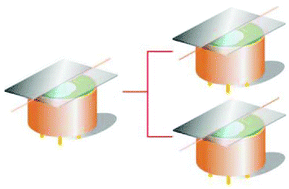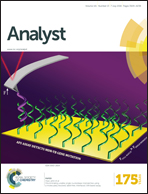In situ calibration of micro-photoionization detectors in a multi-dimensional micro-gas chromatography system†
Abstract
A photoionization detector (PID) is widely used as a gas chromatography (GC) detector. By virtue of its non-destructive nature, multiple PIDs can be used in multi-dimensional GC. However, different PIDs have different responsivities towards the same chemical compound with the same concentration or mass due to different aging conditions of the PID lamps and windows. Here, we carried out a systematic study regarding the response of 5 Krypton μPIDs in a 1 × 4-channel 2-dimensional μGC system to 7 different volatile organic compounds (VOCs) with the ionization potential ranging from 8.45 eV to 10.08 eV and the concentration ranging from ∼1 ng to ∼2000 ng. We used one of the PIDs as the reference detector and calculated the calibration factor for each of the remaining 4 PIDs against the first PID, which we found is quite uniform regardless of the analyte, its concentration, or chromatographic peak width. Based on the above observation, we were able to quantitatively reconstruct the coeluted peaks in the first dimension using the signal obtained with a PID array in the second dimension. Our work will enable rapid and in situ calibration of PIDs in a GC system using a single analyte at a single concentration. It will also lead to the development of multi-channel multi-dimensional GC where multiple PIDs are employed.


 Please wait while we load your content...
Please wait while we load your content...